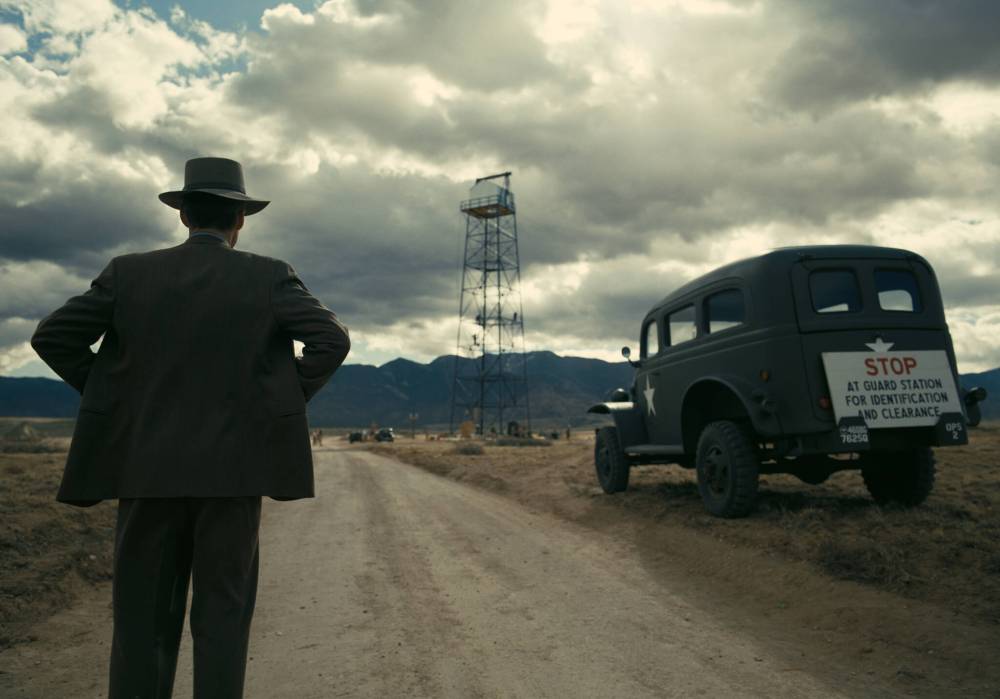Terrible, exquisite beauty
Fascinating and frustrating, too close and aloof, anti-biopic is winning fusion of explosive paradoxes
Advertisement
Read this article for free:
or
Already have an account? Log in here »
To continue reading, please subscribe:
Monthly Digital Subscription
$1 per week for 24 weeks*
- Enjoy unlimited reading on winnipegfreepress.com
- Read the E-Edition, our digital replica newspaper
- Access News Break, our award-winning app
- Play interactive puzzles
*Billed as $4.00 plus GST every four weeks. After 24 weeks, price increases to the regular rate of $19.00 plus GST every four weeks. Offer available to new and qualified returning subscribers only. Cancel any time.
Monthly Digital Subscription
$4.75/week*
- Enjoy unlimited reading on winnipegfreepress.com
- Read the E-Edition, our digital replica newspaper
- Access News Break, our award-winning app
- Play interactive puzzles
*Billed as $19 plus GST every four weeks. Cancel any time.
To continue reading, please subscribe:
Add Winnipeg Free Press access to your Brandon Sun subscription for only
$1 for the first 4 weeks*
*$1 will be added to your next bill. After your 4 weeks access is complete your rate will increase by $0.00 a X percent off the regular rate.
Read unlimited articles for free today:
or
Already have an account? Log in here »
Hey there, time traveller!
This article was published 21/07/2023 (803 days ago), so information in it may no longer be current.
At one point in Christopher Nolan’s three-hour anti-biopic, J. Robert Oppenheimer (Cillian Murphy), described as “the man who brought quantum physics to America,” is seen explaining to a student that light is both a particle and a wave. How is that possible, he asks.
Nolan’s massive, ambitious, defiantly non-linear film is many things at once. Oppenheimer is both fascinating and frustrating, intimate and intriguingly aloof. It’s packed with (literally) explosive epic power that seems to be deliberately diluted with talky, time-hopping discursions. It relies on extreme close-ups of the human face, while holding its subjects at a cool emotional remove.
Looking at the American scientist who worked on the Manhattan Project, heading the wartime program in the New Mexico desert to build an atomic bomb before the Nazis, the film compresses the sweep of history into the tragedy of one man. (Nolan acknowledges but cannot quite encompass the human cost of the bombing of Hiroshima and Nagasaki.)
Operating at Peak Nolan, the film features many of its auteur’s familiar tropes but uses them to sometimes unexpected effect. Nolan directs and scripts, adapting Martin J. Sherwin and Kai Bird’s award-winning book, American Prometheus. He invests that historical material with his own distinctive style, backing it with an almost unrelenting wall of sound (sometimes you can feel it vibrating in your chest) and mixing up short, prismatic scenes that slip through time.
Nolan, the man behind mind-messing movies such as Inception and Tenet, has a reputation for being needlessly complicated. There are technical tics here that are possibly too opaque, like the often-muddy audio that makes for a lot of dropped dialogue. (You might want to watch it later with subtitles.) And the story structure can be idiosyncratic and anticlimactic, sometimes bafflingly so.
In the end, though, Nolan’s weirdly withholding approach adds up to something better than a final and definitive picture of one man. Oppenheimer suggests the complex, elusive nature of public and personal truth.
Embodying this ambiguity, Murphy inhabits the title role with a performance that is both precise and evasive. An actor who could be almost distractingly beautiful when he was young, Murphy is gaunt and angular here, marked and harrowed by his character’s inner contradictions.
He gets Oppenheimer’s patrician arrogance, his nervy need for professional control that is at odds with his impulsive, messy personal life. He shows how the same man can grasp abstract scientific concepts and miss the implications of ordinary human interactions. (Genius is not necessarily the same as wisdom, as one character points out.)

Melinda Sue Gordon / Universal Pictures
A large part of the success of Oppenheimer is due to the performance of Cillian Murphy as the deeply divided J. Robert Oppenheimer, with Emily Blunt as his wife, Kitty.
Specifically, he suggests how Oppenheimer’s eagerness to build an atomic bomb, which begins with ferocious intellectual curiosity and deeply felt opposition to fascism, is overtaken by crippling guilt at what he has made possible.
Murphy’s extraordinary performance as Oppenheimer is the film’s central organizing principle, but there’s support from a battalion of actors — Robert Downey Jr., Matt Damon, Rami Malek, Gary Oldman, Josh Hartnett as scientific colleagues, military men and government figures, Florence Pugh as Oppenheimer’s communist lover, and Emily Blunt as Kitty Oppenheimer (who at first seems like a bitter, alcoholic-wife cliché but under pressure gets a chance to assert her formidable personality).
This is not a straight-up look at a turning point of wartime history. We don’t even get to Los Alamos until the one-hour mark, when Nolan uses his mastery of craft to ratchet up suspense around the Trinity test — the detonation of the prototype bomb.
On the one hand, there’s a possibility the device won’t work. On the other hand, there’s a non-zero chance it could destroy the whole world.
But Oppenheimer’s scientific achievement is presented not as a war-ending triumph but as the beginning of a new and dangerous nuclear world.

Melinda Sue Gordon / Universal Pictures
As the wife of Cillian Murphy’s J. Robert Oppenheimer, Emily Blunt rises above what initially looks like a meek-wife cliché.
At this point, Nolan shifts from the global scale to a much smaller conflict that’s been hiding in plain sight. The last section of the film deals with congressional hearings and an Atomic Energy Commission board enquiry, in which McCarthy-era paranoia about communism fuels attacks on Oppenheimer, whose left-wing politics — he describes himself as “an FDR New Dealer” — are seen as potentially treasonous.
In these sequences, Nolan elaborates on the story’s sneaky subordinate theme, the collision between experts and politicians — a tension that continues to play out in American life and gives this period piece some uncomfortable topicality.
This ending may feel convoluted and anticlimactic, but Nolan seems to be making a deliberate choice. People may want certainties, but “the new physics,” as Albert Einstein (Tom Conti) suggests in one pivotal scene, can offer only probabilities.
Oppenheimer can’t be neatly summed up into one definitive storyline, but its probabilities are potent and provocative.
alison.gillmor@winnipegfreepress.com

Universal Pictures/TNS
Christopher Nolan’s Oppenheimer, starring Cillian Murphy in the title role, is a challenging but ultimately rewarding portrayal of extremes.

Studying at the University of Winnipeg and later Toronto’s York University, Alison Gillmor planned to become an art historian. She ended up catching the journalism bug when she started as visual arts reviewer at the Winnipeg Free Press in 1992.
Our newsroom depends on a growing audience of readers to power our journalism. If you are not a paid reader, please consider becoming a subscriber.
Our newsroom depends on its audience of readers to power our journalism. Thank you for your support.


